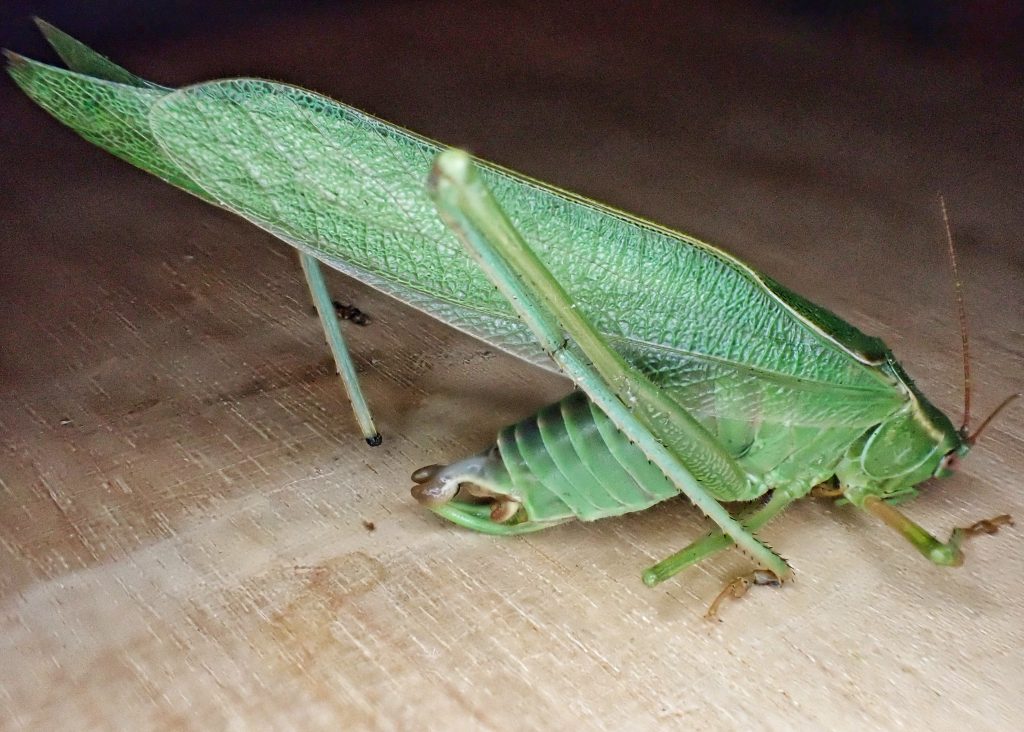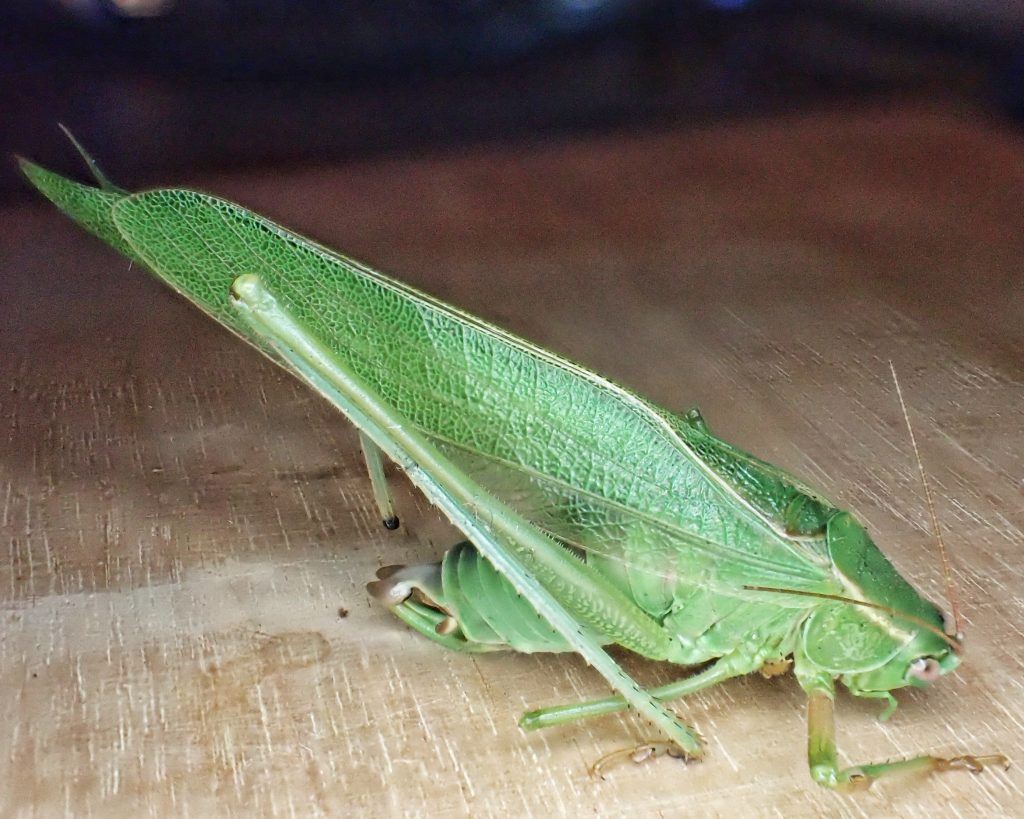
Ever since I found the invasive bush katydid Phaneroptera nana I’ve been on the lookout for these native Scudderia, but until a few weeks ago all I’d ever found were more P. nana. But then I saw this guy peeking around a blade of grass when I was looking for Flame Skimmers at Klineline. I had a hard time getting the camera to focus on him because of a breeze, and the many grass blades he was in the midst of, but I couldn’t see any speckling, so I had my hopes up he was a Scudderia. Eventually I grew worried he’d rabbit on me without proper documentation, so I snatched him with my bare hand, and put him in a container. At home he was quite cooperative after a bit of refrigeration, and after several diagnostic shots I released him into a nearby berry thicket.

Fork-tailed Bush Katydids can be a pest in the citrus industry (Cass et al.; 2020), but are not considered an agricultural pest here in the PNW. Males apparently ‘sing’ at all hours of the day and night, a little 3 chirp song followed by silence whilst awaiting a reply. Females have a flattened ovipositor and slip one to a few eggs into the area between the top and bottom of the leaf, where they form a sort of blister. She then moves on to another leaf, and may lay up to 175 eggs in her short lifetime. The eggs overwinter in diapause, and hatch in the spring. I can find no information on whether they only target evergreen leaves, or if the eggs end up buried in the leaf litter.
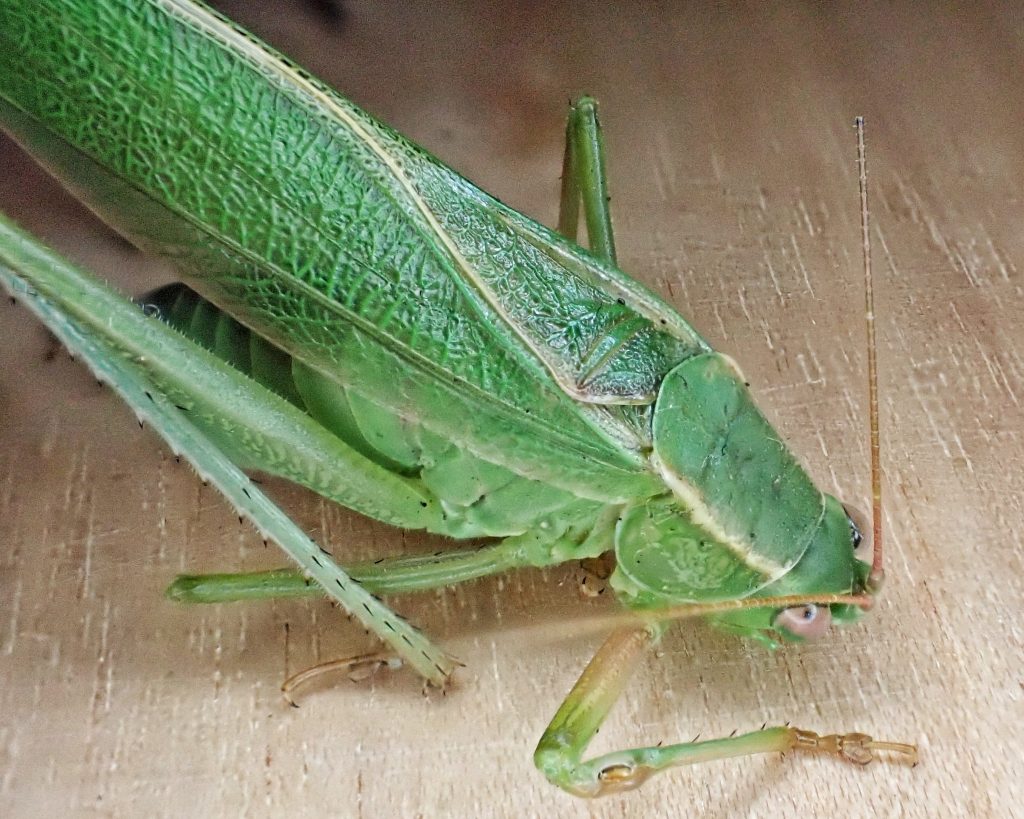
Description-Large (32-47mm long, counting wings) katydid that is most often bright green, but may be pink to reddish brown, and is without speckling; forewings are fairly narrow (about 5x as long as wide), and extend well past the tip of the abdomen; male supra-anal plate narrows significantly, and then widens abruptly into a wide, U-shaped fork.
Similar species–Scudderia mexicana male’s supra-anal plate not expanded as much, only found in our region in s Oregon/n California; s. pistillata has broader forewings (about 4x as long as wide), only found in our region in se BC/nw Montana; Phaneroptera nana has abundant reddish black speckling, and is smaller (22-24mm).
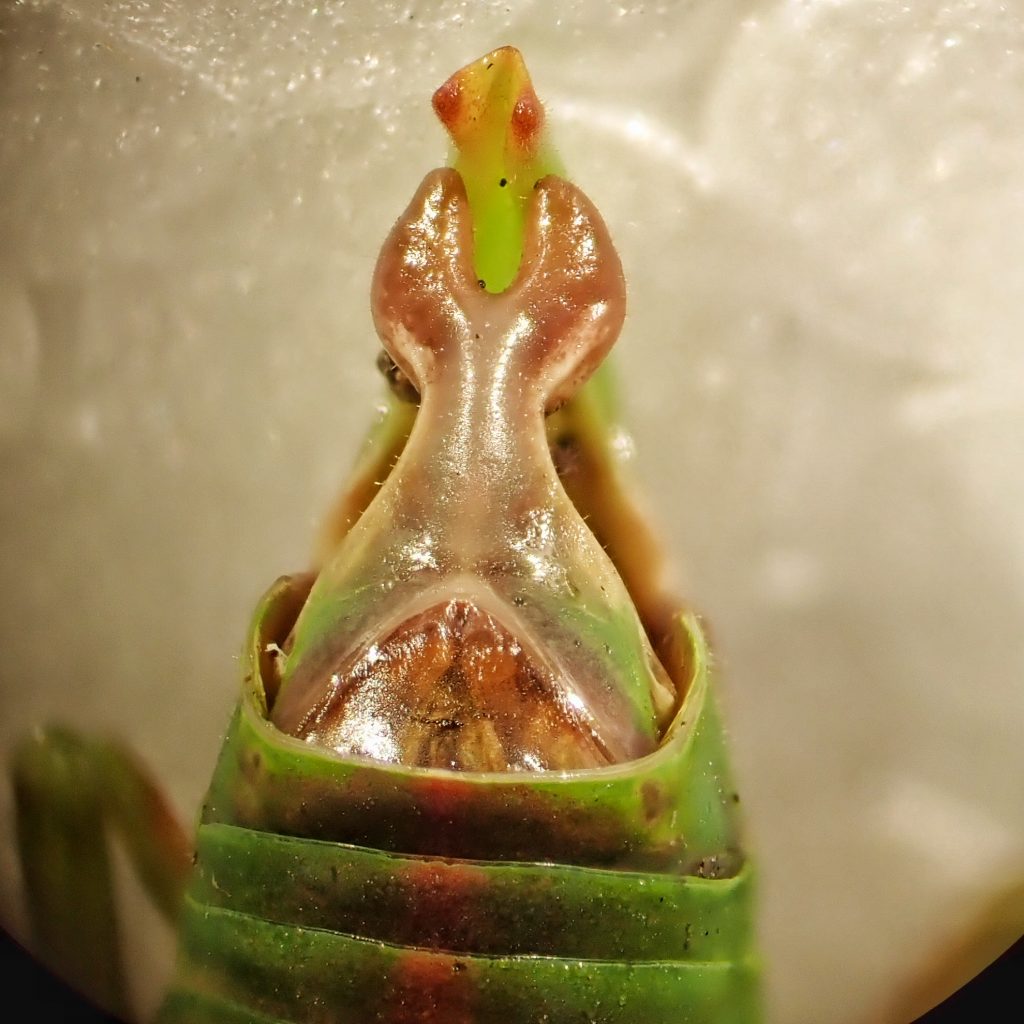
Habitat– Meadows, forest edges, brushy and weedy clearings and fields.
Range-North America north of Mexico; region wide in the PNW.
Eats-Adults and nymphs feed on the foliage of a wide variety of vegetation.
Eaten by– Sphecid wasps (especially Great Golden Digger Wasps) utilize them as a larval host; adults and nymphs are prey for insectivorous birds, reptiles, mammals, and arthropods large enough to subdue them.
Adults active– Late July through October.
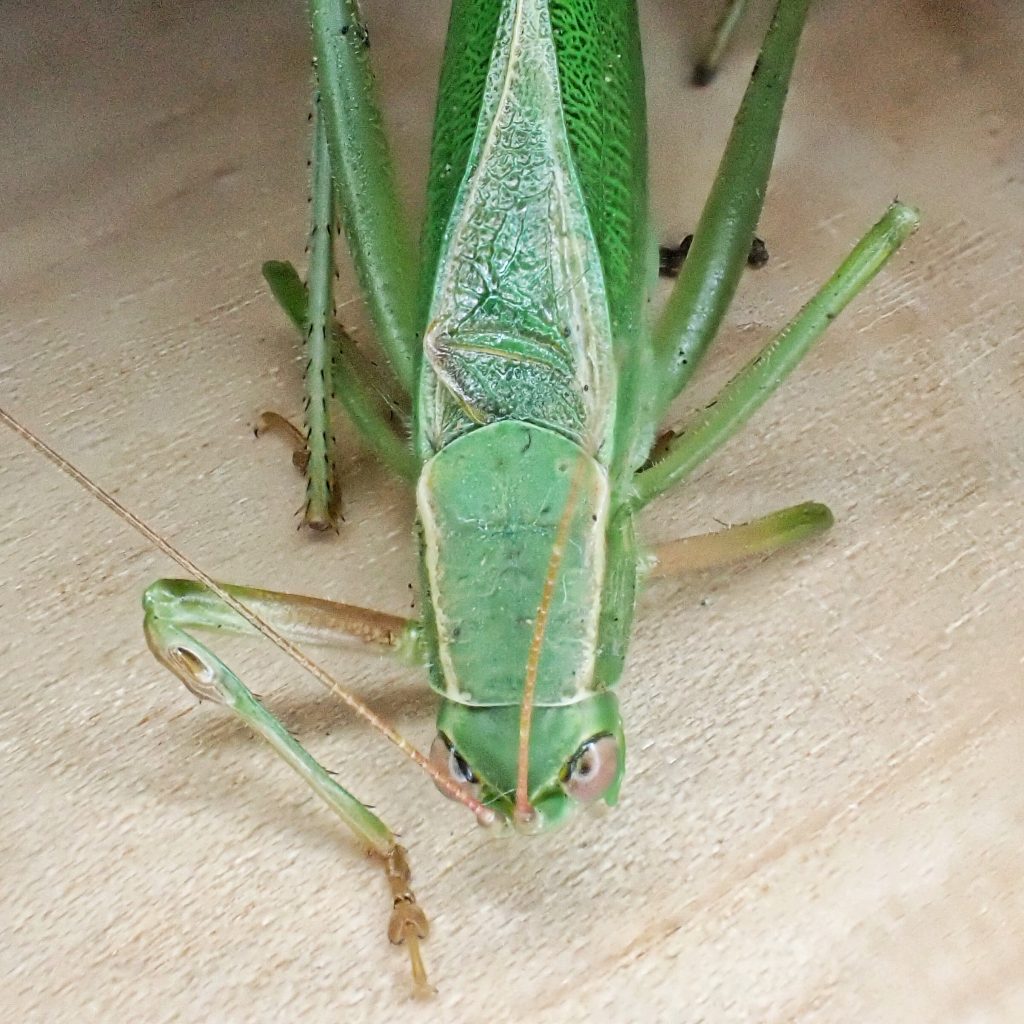
Life cycle-Eggs are laid in the fall, overwinter in diapause, hatch in mid spring, and adults are found after mid-July; adults die in late fall.
Etymology of names–Scudderia honors SH Scudder (1837-1911), a world renowned paleontologist and entomologist, who did extensive and foundational work with Orthoptera (grasshoppers and their kin). The specific epithet furcata is from the Latin word for ‘fork’, and refers to the forked supra-anal plate of the males.
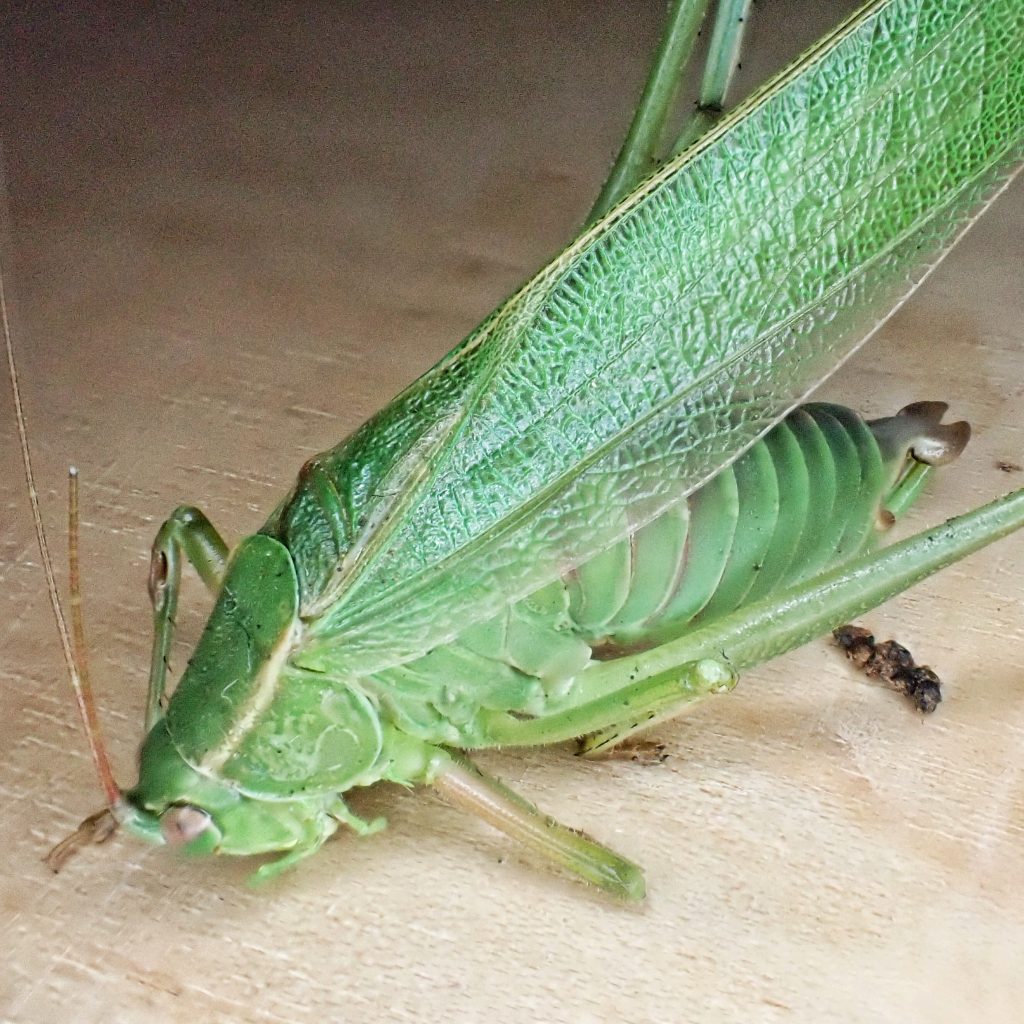
Species Scudderia furcata – Fork-tailed Bush Katydid – BugGuide.Net
Fork-Tailed Bush Katydid | Missouri Department of Conservation
fork-tailed bush katydid (Scudderia furcata)
https://en.wikipedia.org/wiki/Samuel_Hubbard_Scudder
